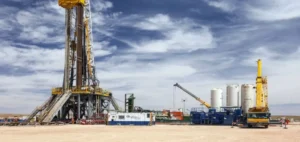Hokkaido Gas is structuring its liquefied natural gas (LNG) supply to secure a base of volumes and smooth consumption peaks. The company combines purchases under firm contracts and successive tenders in order to optimize the delivery profile. The approach aims to articulate a base flow with seasonal additions, in line with common practices in the Asian market. The available elements make it possible to describe the volumes, delivery windows and associated infrastructure without resorting to interpretations.
Tender and contractual horizon
Hokkaido Gas launched a tender covering two to four cargoes per year over a seven-year period starting in April 2027. An initial selection round closed at the beginning of March, followed by shortlist phases. The specifications include delivery windows consistent with the needs of a market where demand varies sharply by season. The calibration of volumes aims to complement existing commitments without oversizing downstream logistics.
Local demand shows marked seasonality, with peaks during the winter period. This profile leads buyers to favor deliveries concentrated in the colder months and flexibility options to absorb temperature swings. The allocation of cargoes between winter and shoulder seasons reflects operational constraints in distribution and storage. The procurement strategy mirrors this reality by combining firm blocks with complements tailored to requirements.
Long-term base with Santos
In parallel, Hokkaido Gas concluded a long-term Sales and Purchase Agreement (SPA) with Santos covering up to nearly 400,000 metric tons per year for ten years starting in 2027. Deliveries are planned on a Delivered Ex-Ship (DES) basis, meaning delivered to the buyer’s port. This base creates a recurring volumetric foundation for the period concerned. The logistical arrangements align with standards in the Asia-Pacific region.
Gas sales recorded by Hokkaido Gas in fiscal year 2024–2025 amount to 647.2 million cubic meters, a slight year-on-year increase. As an order of magnitude, one million metric tons of LNG corresponds to about 1.36 billion cubic meters of gas after regasification. On this basis, an annual volume close to 0.4 million metric tons represents approximately 0.54 billion cubic meters. This scope covers a significant share of historical needs, subject to unit differences, efficiencies and end-use patterns.
Ishikari infrastructure and related logistics
The Ishikari LNG terminal is the hub for Hokkaido Gas receipts. The site includes tanks of 180,000 cubic meters and 200,000 cubic meters operated by Hokkaido Gas, complemented by Hokkaido Electric Power Company (HEPCO) capacities with 230,000-cubic-meter tanks. The facility passed its 100th cargo received in spring 2021, indicating an established operating record. The complex supplies the local network after regasification.
The joint configuration with HEPCO supports optimization between network uses and power needs. Tank sizing and call frequency allow denser deliveries during the cold season. The downstream chain relies on regasification and distribution capacities designed for variable throughputs. This setup provides leeway to adjust arrival windows and dispatch rates.
Price references and contractual practices
In the Asian market, many long-term contracts remain oil-indexed, notably to Brent or to the Japanese Crude Cocktail (JCC), via a percentage slope. Levels observed in the region for forward contracts often stand around 13.5% to 14% of the barrel, depending on flexibility features and term. Free on Board (FOB) or Delivered Ex-Ship (DES) terms also influence overall contract economics. The combination of a long-term base and complementary purchases via tenders follows these practices.
The Japan Korea Marker (JKM), the North Asian spot price index, provides a reference for short-term arbitrage. At the end of August, the October contract was around $11.00 per million British thermal units. This level offers a comparison point for covering seasonal needs and managing gaps between oil-indexed contracts and the spot market. Buyers generally align these references to contain supply volatility.
Volume reading and 2027–2034 trajectory
A reference LNG carrier loaded with about 170,000 cubic meters equates to roughly 72,000 metric tons of LNG. On this basis, two to four cargoes per year represent approximately 0.14 to 0.29 million metric tons. Adding this to a base near 0.4 million metric tons yields a theoretical range of about 0.54 to 0.69 million metric tons per year. This reading must account for differences between commercial volumes of distributed gas, energy equivalences and technical efficiencies.
The 2027–2034 trajectory requires coordination among firm contracts, seasonal delivery windows and storage capacity. The calibration aims to cover baseline consumption while preserving room for additional purchases if local demand evolves. Parameters include upstream availability, maritime logistics and terminal slots. Market participants will track these balances to assess supply resilience and the total delivered cost.






















